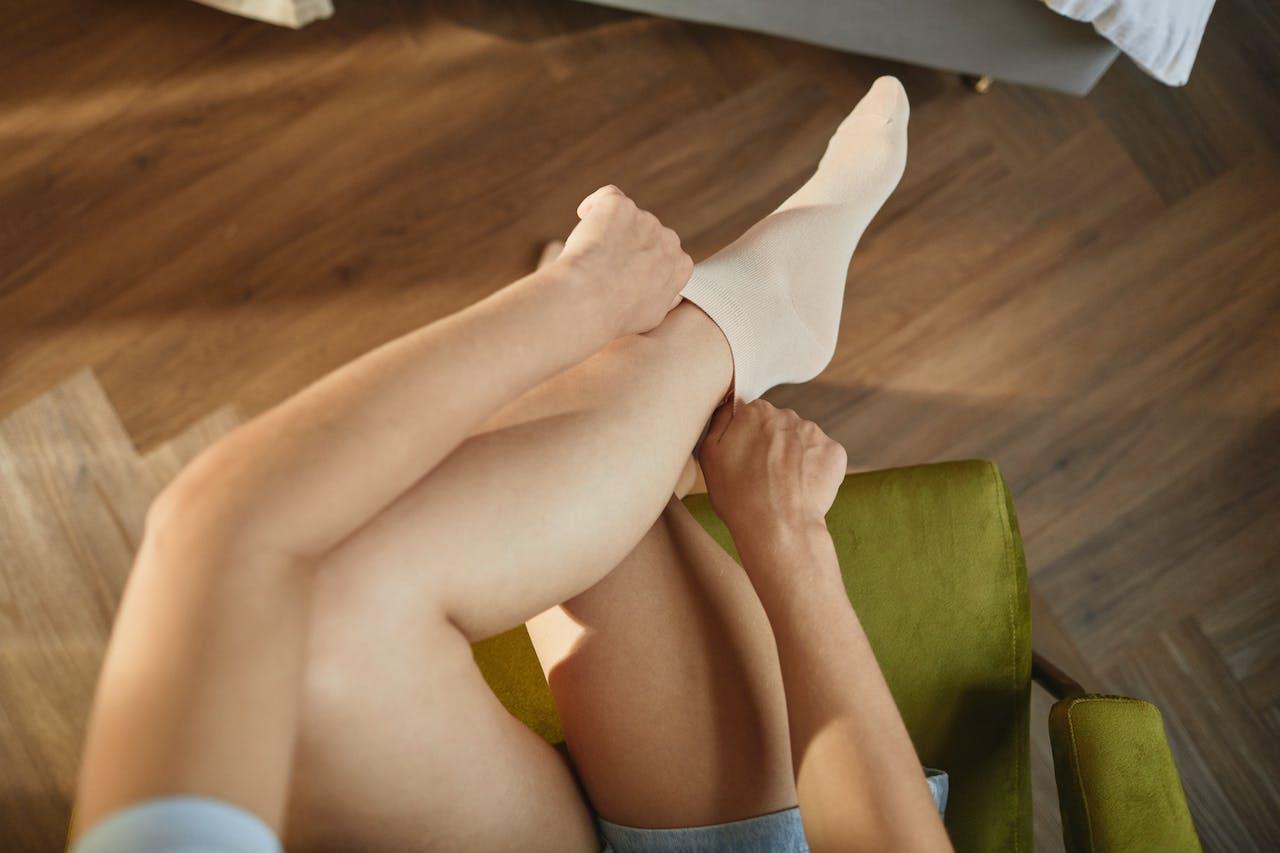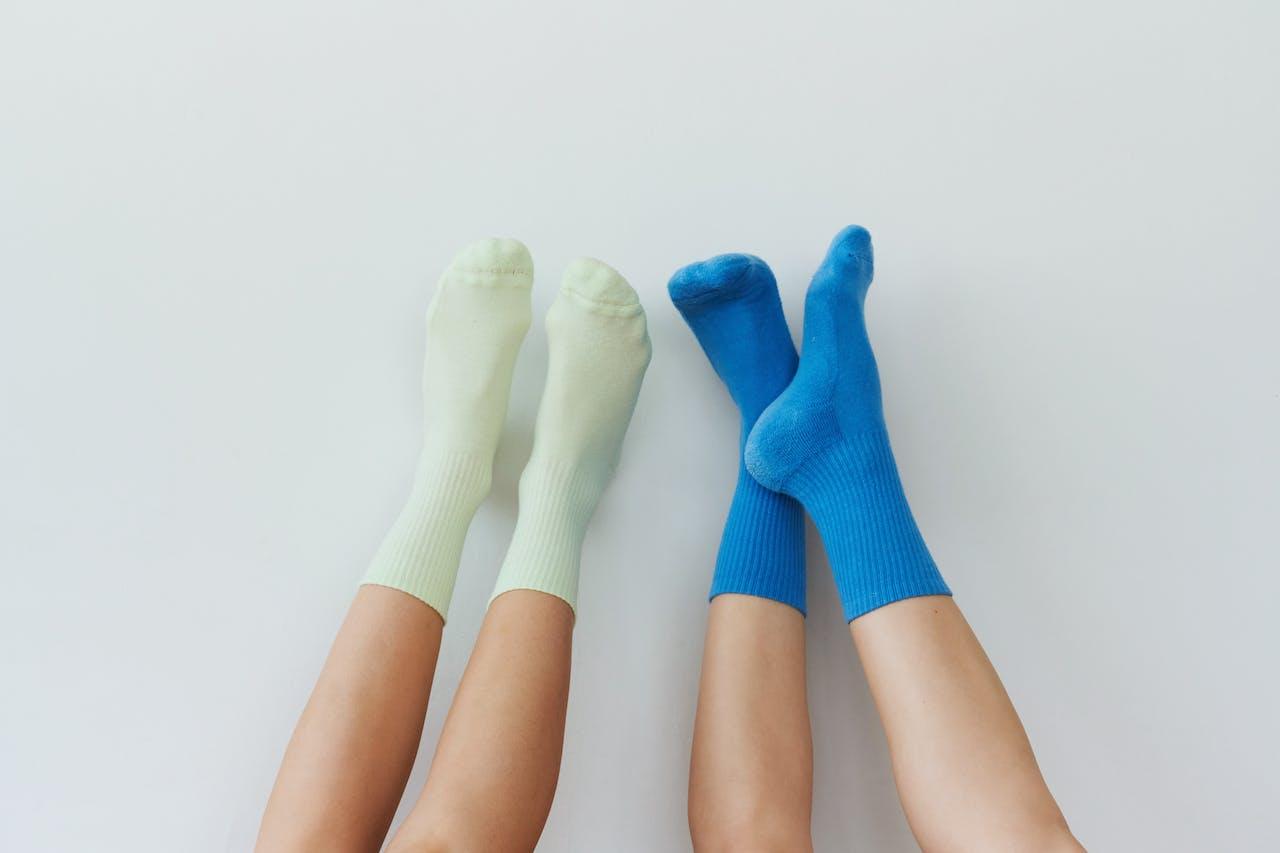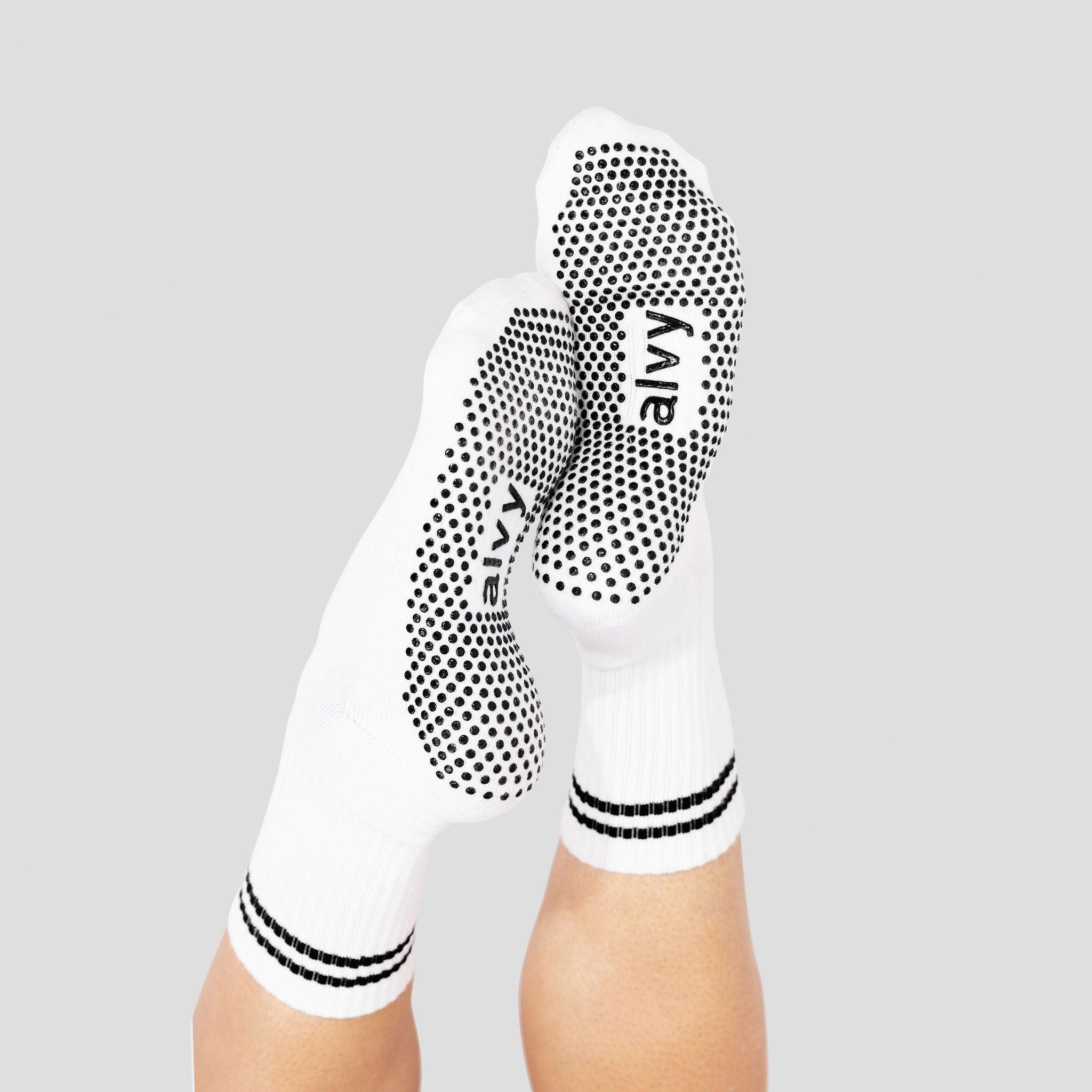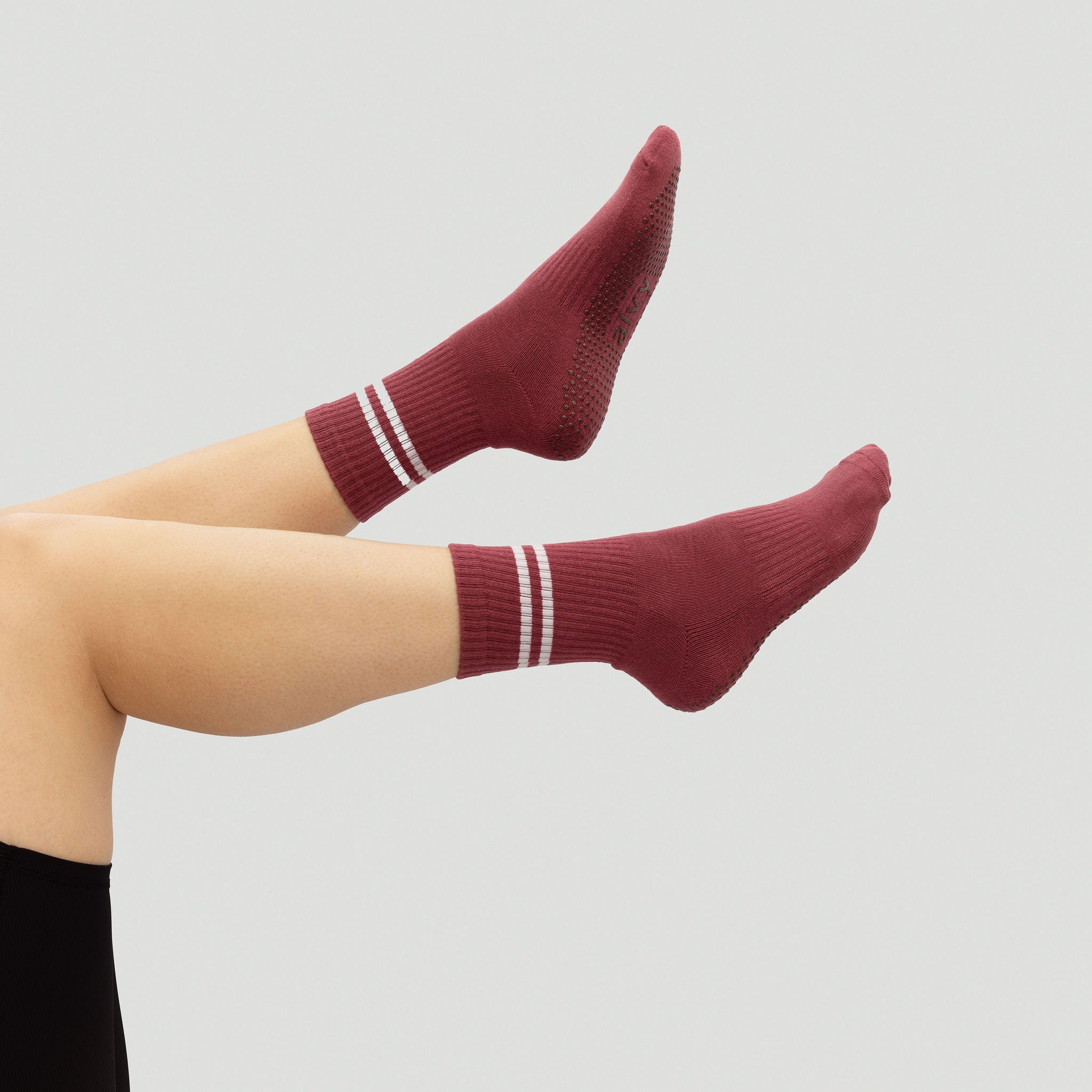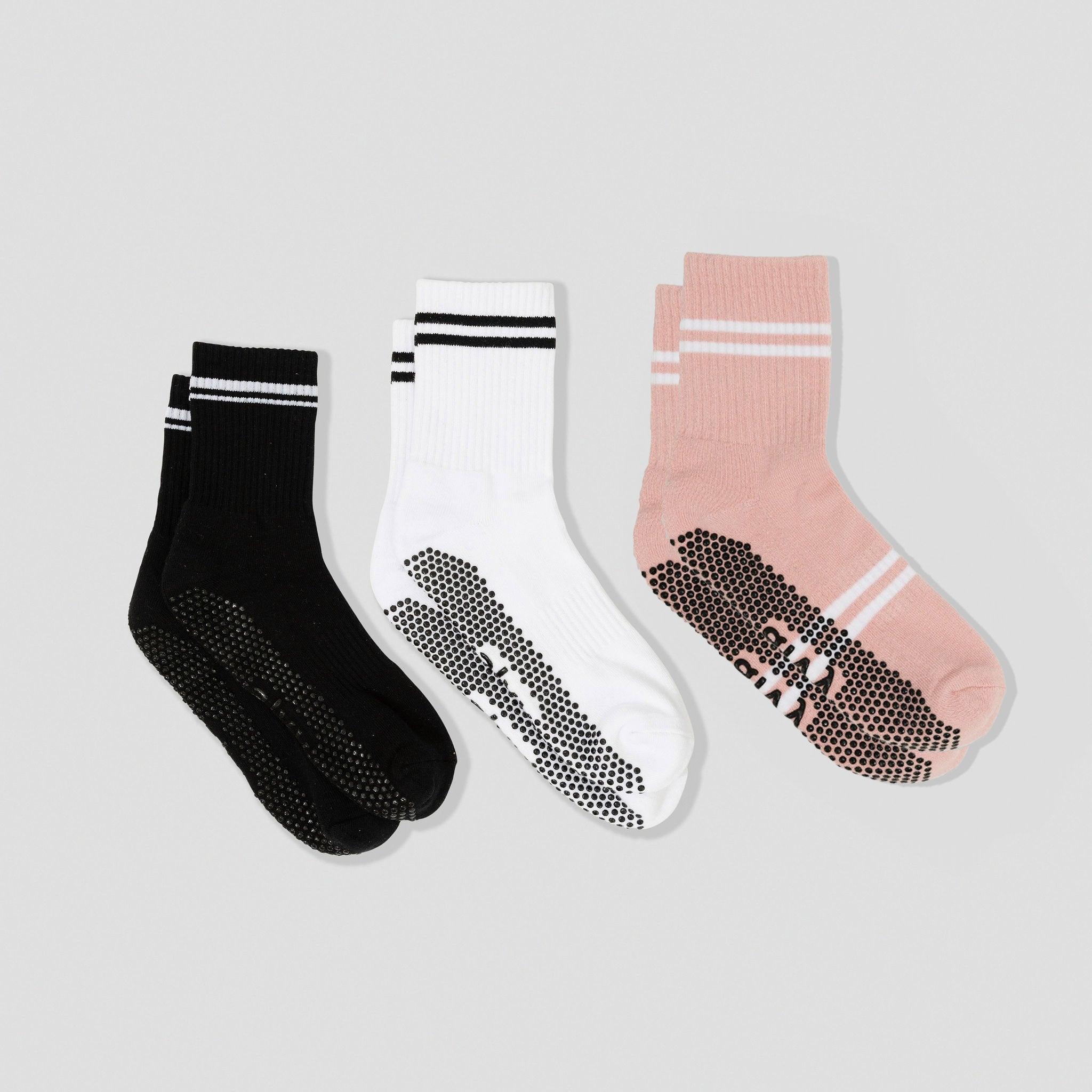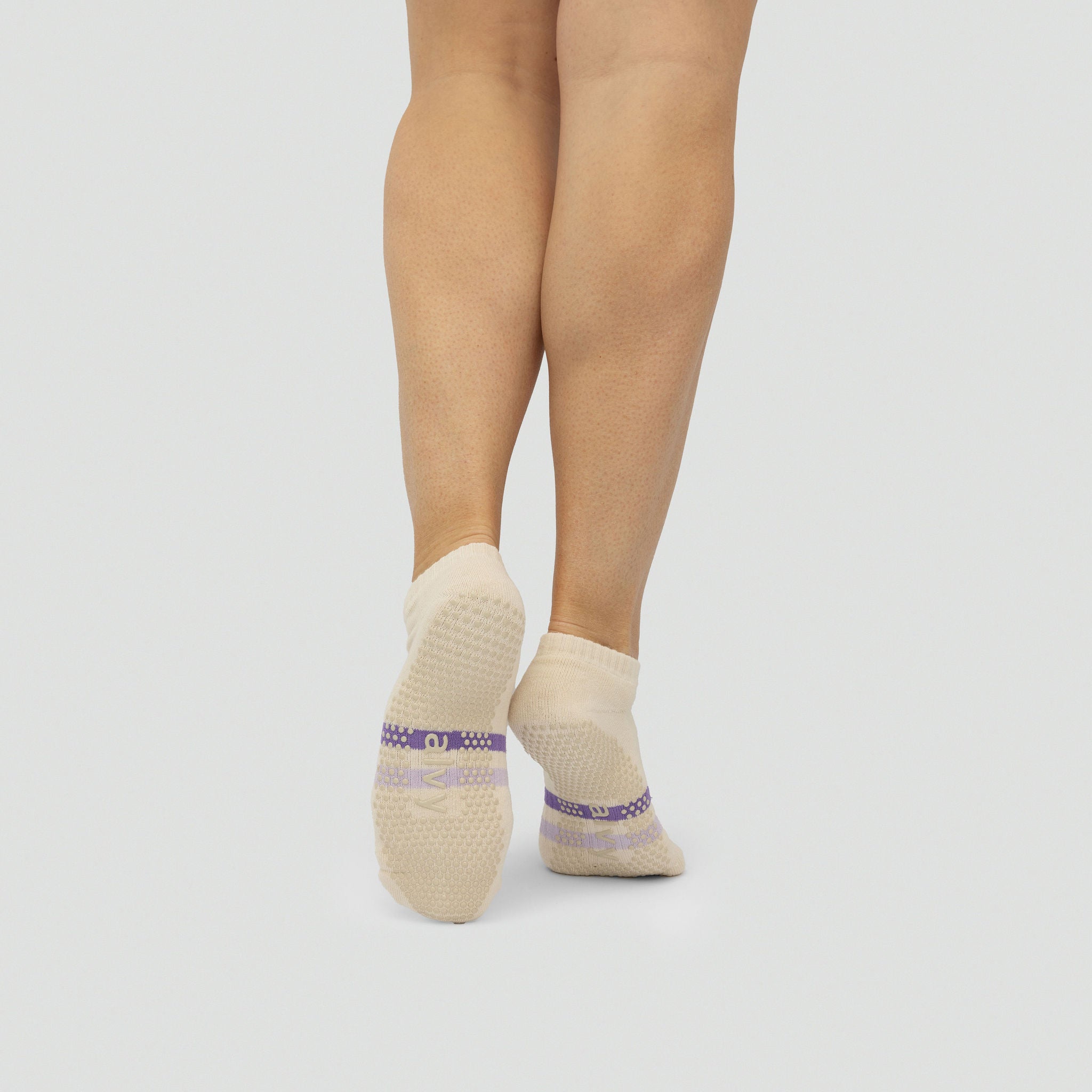Knowing what to wear at Pilates is essential to ensure a safe and effective workout. Socks are frequently forgotten while most individuals concentrate on choosing the appropriate mat or attire. But choosing the right Pilates sock can make a big impact on your workout.
Grip socks are among the most widely used styles of socks for Pilates. These socks' soles are covered with tiny rubber dots or patterns that offer traction and keep you from slipping on the mat. There are many reasons to wear grip socks such as assisting you in keeping good form. To assist you in selecting the ideal sock for your Pilates workout, we shall compare ordinary socks and Pilates grip socks in this post.
What Are Grip Socks and Regular Socks?
Non-slip socks, or grip socks, are specifically made socks with designs or tiny rubber dots on the sole to give traction and keep you from slipping on the matting. These socks are designed to fit snugly on your feet and are composed of breathable fabrics to improve your performance during Pilates activities.
Conversely, normal socks are the kind of socks that most people usually wear every day. They're constructed of a variety of materials, such as wool, cotton, and synthetic fibres, and their purpose is to keep your feet cosy and toasty.
Grip Socks vs. Regular Socks
The sole is the primary distinction between grip socks and ordinary socks. Regular socks have a smooth sole that might lead to slipping on the mat where as grip socks have a non-slip sole that offers traction and prevents slipping. Regular socks may slide around on your feet during exercises, but grip socks are made to fit snugly on your feet to avoid bunching and slippage.
The degree of support and cushioning also varies. Compared to conventional sock materials, grip socks are frequently thicker and offer greater support and cushioning, which can lessen the strain on your feet and joints when exercising. Grip socks will also have a longer lifespan compared to normal socks and so you can expect to pay more for them.
Benefits of Wearing Grip Socks During Pilates
When doing Pilates, wearing grip socks has various advantages. In the first place, they offer traction and guard against slipping, which can support you in keeping good form and avoiding accidents. Secondly, they offer support and padding, which helps lessen the force that exercises put on your joints and feet. This can help to prevent blisters forming on your feet. Finally, by wicking away moisture and limiting the growth of bacteria and odour, they can help keep your feet dry and clean.
Different Types of Grip Socks Available
Grip socks come in a variety of forms, each with special qualities and advantages. Among the most well-liked varieties of grip socks are:
- Complete Toe Grip Socks: These socks offer traction and avoid slippage thanks to their non-slip sole and separate toe pockets. Their purpose is to improve your stability and balance while performing activities.
- Half Toe Grip Socks: These socks include a non-slip sole that offers traction and keeps you from slipping, as well as separate toe pockets that cover just your toes. They are made to feel as though you are wearing them barefoot while still offering support and grip.
-
Open Toe Grip Socks: Your toes may breathe and move freely thanks to the open toe design of these socks. They are made to improve your balance and stability during workouts and include a non-slip sole that offers traction and keeps you from slipping. Here's a comparison of full toe and toeless grip socks to read next.
Anklet Grip Socks: These socks include a non-slip sole that offers traction and keeps you from slipping, as well as a low-cut style that covers just the ankle. They are made to fit comfortably and breathe easily, without sacrificing support or grip.
Best Type of Grip Sock for Pilates
What kind of grip sock is best for Pilates will depend on your requirements and personal preferences. Full toe grip socks can be your best bet if you'd want greater support and covering. Half toe grip socks can be your best bet if you want more flexibility and a barefoot feel. Anklet grip socks are an excellent choice if you want a snug and breathable fit, while open toe grip socks are a terrific alternative if you want your toes to breathe and move freely. Some people will even use yoga socks for Pilates classes.
Wrapping Up
For a safe and efficient Pilates session, selecting the appropriate socks is crucial. Even though ordinary socks could be more comfortable, they raise the possibility of harm by causing slipping on the mat. In contrast, grip socks offer cushioning, support, and traction, all of which can improve performance and help you avoid injuries.
Choose the grip socks type that best fits your needs and preferences while selecting them for Pilates. Half toe grip socks offer greater flexibility and a barefoot feel. Compared to toe-less grip socks, full toe grip socks offer the maximum coverage and support. Anklet grip socks offer a snug, breathable fit, while open toe grip socks let your toes breathe and move freely.
In conclusion, choosing the appropriate Pilates socks can have a big impact on your Pilates routine. With the correct grip socks, you may improve your form, avoid injuries, and perform better. There can be several downsides if you pick the wrong type of grip sock too.

